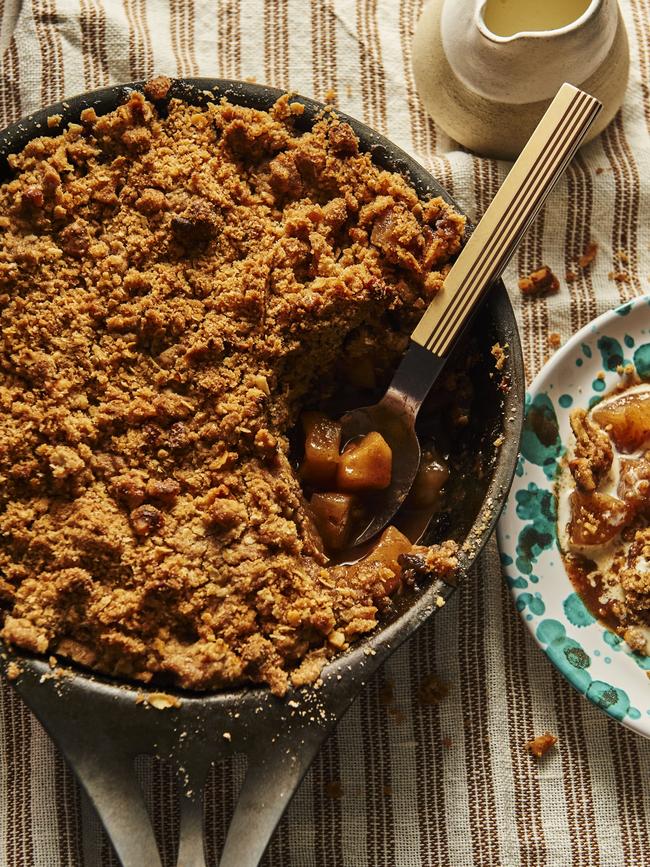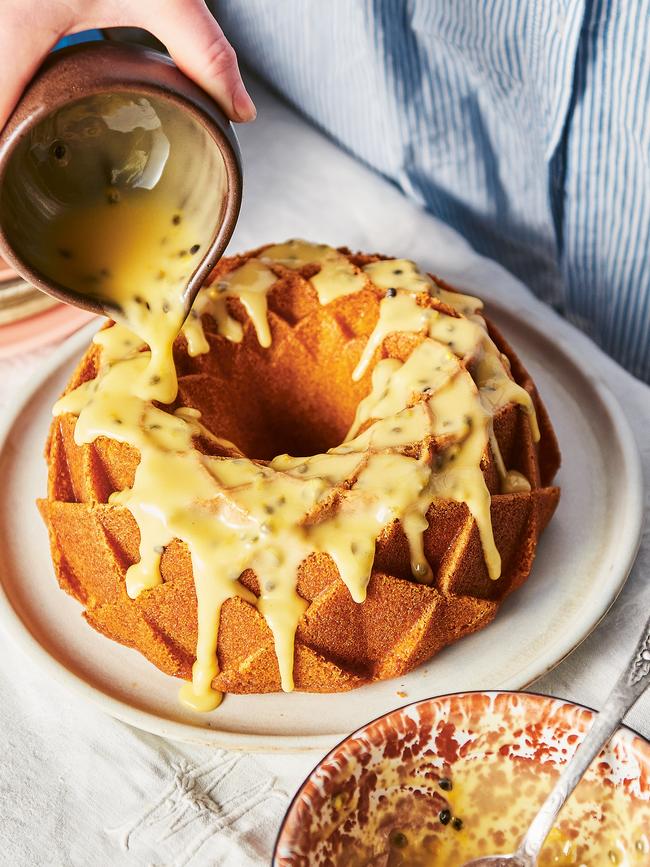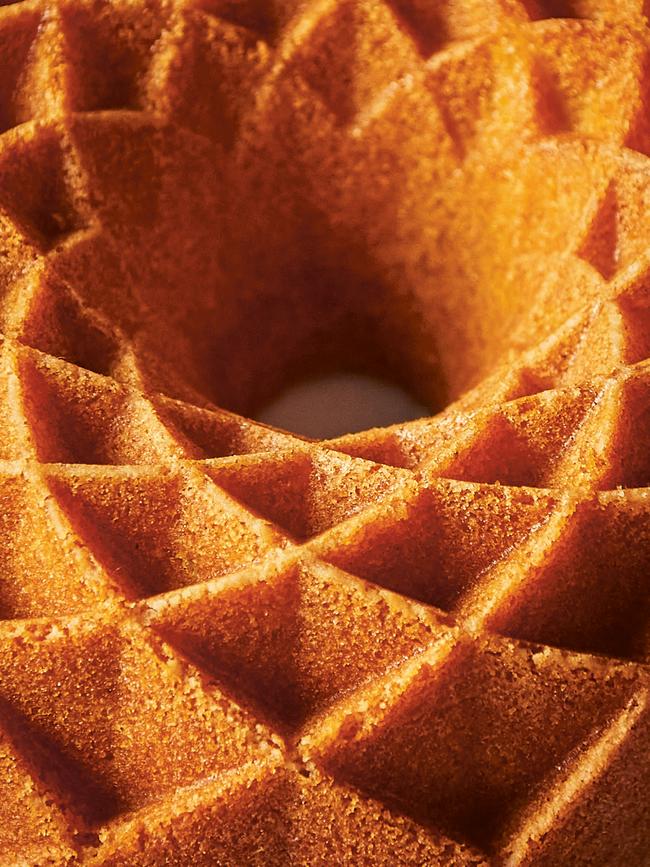These two baked recipes will elevate your baking routine
My earliest memories are of the aroma of the apple sheds that we visited on a primary school excursion to the valley and the smell of my grandma’s freshly baked apple crumble

One of the first menu items we discussed in the early days of our bakery was based on the importance of using local apples from the many orchards that surround us in the Huon Valley. My earliest memories are of the aroma of the apple sheds that we visited on a primary school excursion to the valley and the smell of my grandma’s freshly baked apple crumble on a Sunday afternoon. Happy times!


Huon apple crumble
Ingredients
Crumble
- 200g plain flour
- 75g rolled oats
- 75g chopped nuts (almonds, walnuts or hazelnuts)
- 175g caster sugar
- 7g ground cinnamon
- 5g ground ginger
- Pinch of salt
- 200g cold diced butter
Apple filling
- 8 apples (Ruby Golds, Fujis or Granny Smiths work best)
- 100g caster sugar
- Finely grated zest and juice of 1 lemon, or a splash of apple cider vinegar
- 7g ground cinnamon
- 5g ground ginger
- 20g unsalted butter
Mthod
- For the crumble, mix all the dry ingredients in a stand mixer with the paddle attachment until combined. Slowly, add the butter on low speed, then continue to mix until the mixture has a coarse sandy texture (any more and it will turn into cookie dough). Preheat the oven to 155C fan-forced (175C conventional).
- For the apple filling, peel, core and roughly dice half the apples. Place in a wide ovenproof frying pan with the sugar and lemon zest and juice, and cook over medium heat for about 5 minutes. Meanwhile, peel, core and roughly chop the remaining apples and slowly add to the pan. Stirring regularly to ensure they don’t stick to the bottom, cook for a further 5 minutes.
- Add the spices and butter and stir until the butter is melted. Cover the apples with the crumble and bake for 45 minutes or until the crumble is nice and golden or the filling is bubbling up and out.
Serves 4-6
– Jesse Knierum & Aaron Morgan are from Poolish & Co, Cygnet, Tasmania


Buttermilk bundt cake with passionfruit icing
There is both great comfort and generosity to be found in a good plain cake. We return to it again and again in my house. When I don’t know what else to make, this is what I always bake. The choice of icing may vary – sometimes a fruity glaze or just a dusting of icing sugar – but my personal favourite, and one that feels particularly Australian, is passionfruit icing.
The sharp fruitiness is the perfect foil for the soft, sweet cake beneath. I’m also fond of what buttermilk and a bundt tin can bring to a simple cake. Buttermilk adds a lovely soft crumb and slight lactic acid tang. I always have a carton of it in my fridge, thereby ensuring a cake or batch of pikelets is never far away. And a bundt tin? Well, it can elevate the plainest of cakes into an aesthetic masterpiece, so what’s not to love there?
Ingredients
- Plain flour, for dusting
Cake
- 225g unsalted butter, softened, plus extra for greasing
- 275g caster sugar
- 3 teaspoons vanilla bean paste
- 4 large eggs, lightly beaten
- 250g self-raising flour
- Pinch of bicarbonate of soda (baking soda)
- 1⁄8 teaspoon fine salt
- 185ml buttermilk, at room temperature
Passionfruit icing
- 180g icing sugar, sifted
- 2 tablespoons passionfruit pulp
Method
- Preheat the oven to 180C (160C fan-forcecd) and grease a large 10-cup (2.5 litre) bundt tin well with extra softened butter. Dust with a little plain flour, tapping out any excess. For the cake, combine the butter, sugar and vanilla in the bowl of a stand mixer with the paddle attachment and cream until very light and fluy. This will take several minutes, depending on how soft your butter is, but it’s important to continue until the mixture is very pale and light. Add the eggs, one at a time, beating well after each addition.
- Sift the self-raising flour, bicarbonate of soda and salt into a medium bowl, and whisk gently to combine. Add half the flour mixture to the creamed butter, stirring gently until just combined, then add half the buttermilk. Once incorporated, follow with the remaining flour, then the remaining buttermilk, stirring gently until the batter is smooth.
- Don’t be inclined to overmix. I do this step by hand, rather than in the mixer. Spoon the batter into the prepared tin, smoothing the top and tapping the tin on the bench a few times to remove any air bubbles. Bake for 30-35 minutes, until golden and cooked through – a skewer inserted in the centre should come out clean. Cool in the tin for 10 minutes before carefully turning out onto a wire rack to cool completely.
- Make the passionfruit icing while the cake is cooling by combining the icing sugar and passionfruit pulp in a small bowl. Stir until smooth, then check the consistency – you want it to be a nice pourable thickness so that it drips down the cake, but not so runny that it all slides. Add a little extra passionfruit pulp or icing sugar if necessary.
- Transfer the cooled cake to a serving plate and pour the icing over it, letting it drip down the sides. Slice and serve straight away or wait for the icing to set if you prefer. This cake is best eaten on the day it is made, but it keeps happily in an airtight container in a cool place for 2-3 days. I like to reheat slices gently if serving on day two or three. Serves 10
– Recipe by Tilly Pamment

To join the conversation, please log in. Don't have an account? Register
Join the conversation, you are commenting as Logout